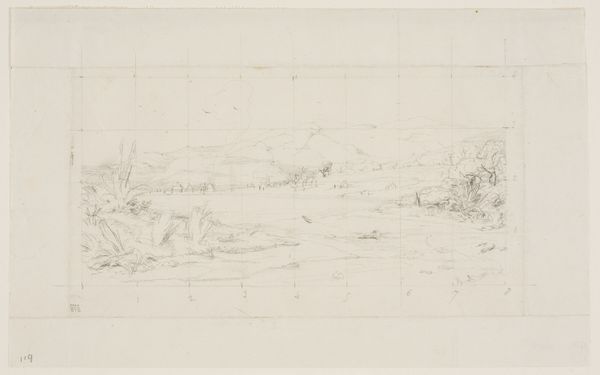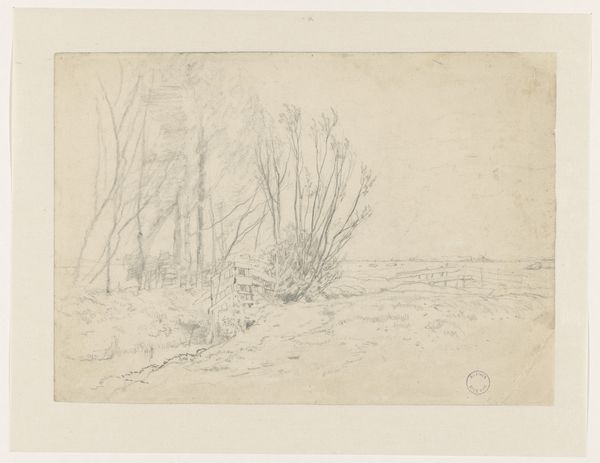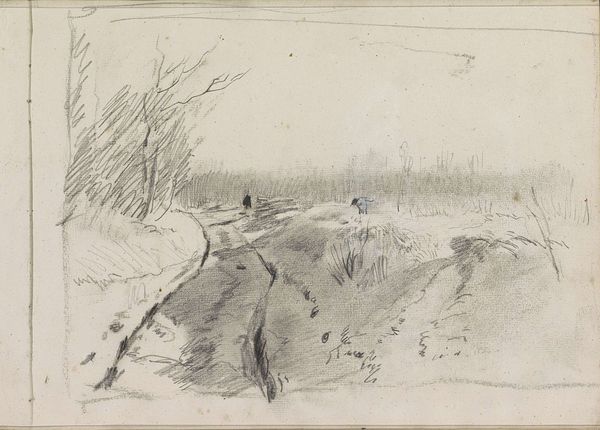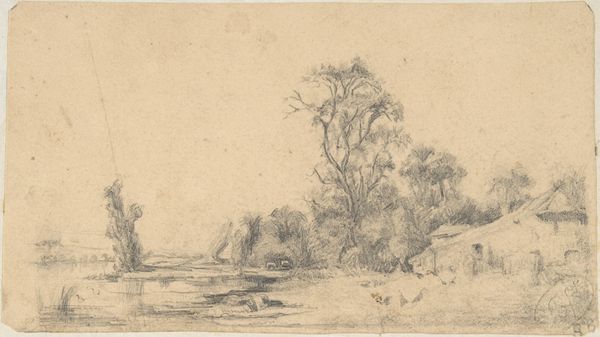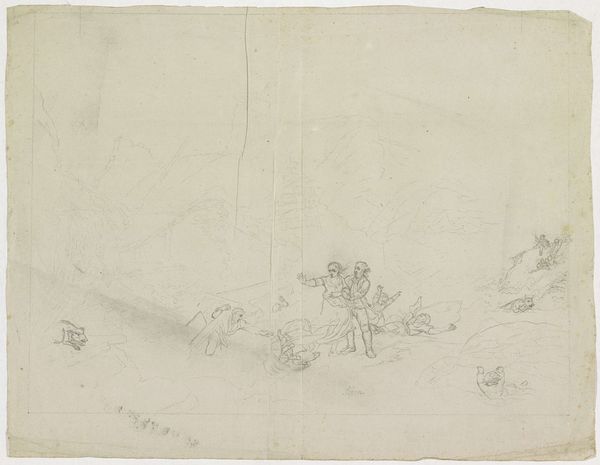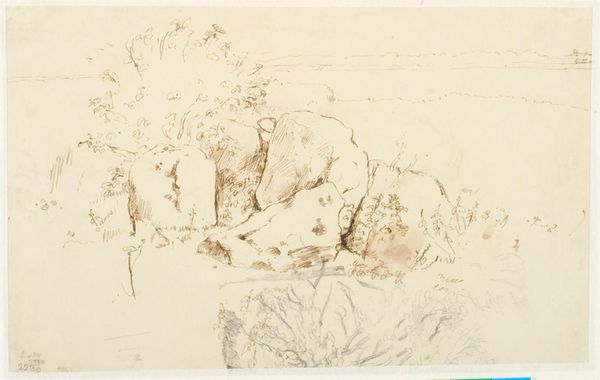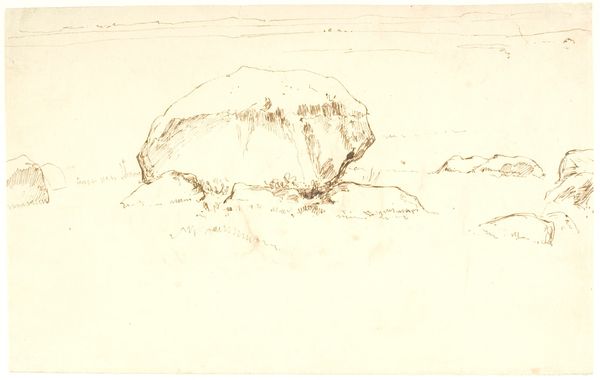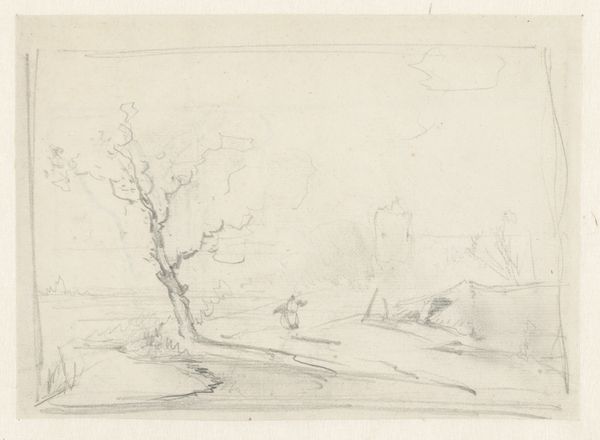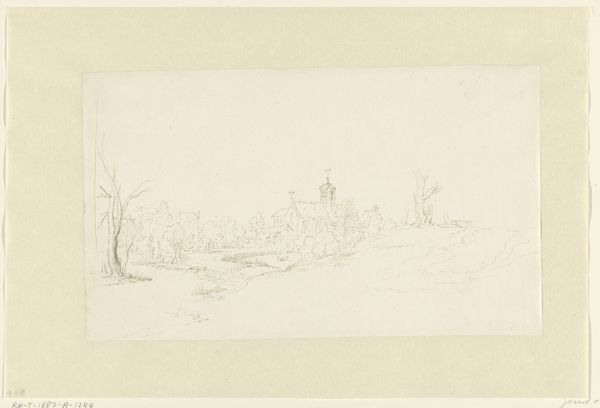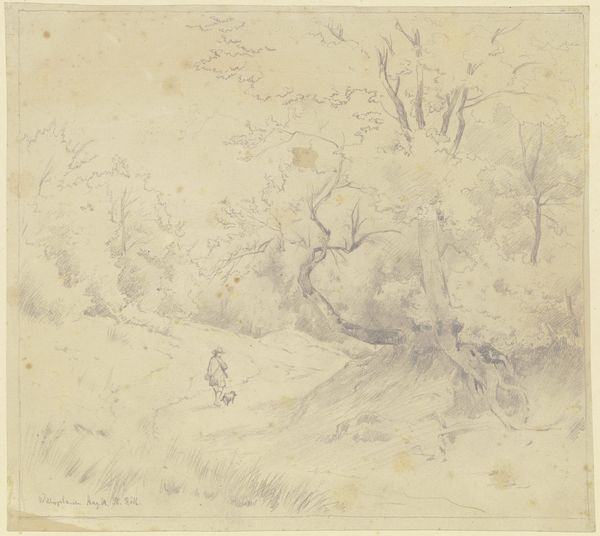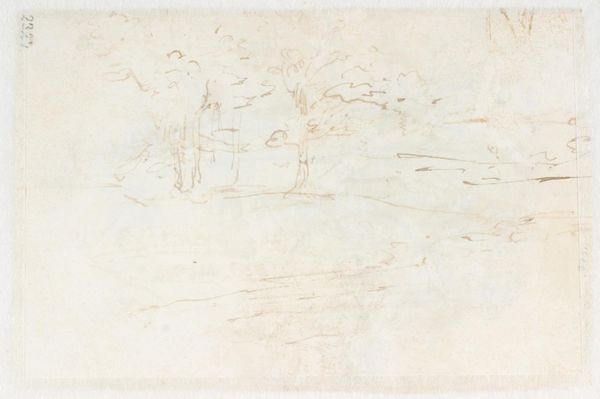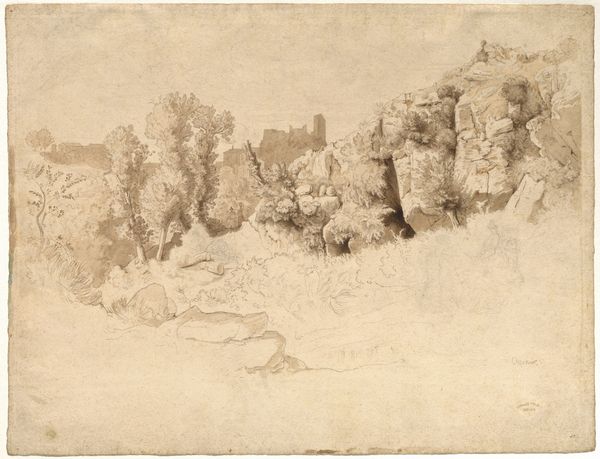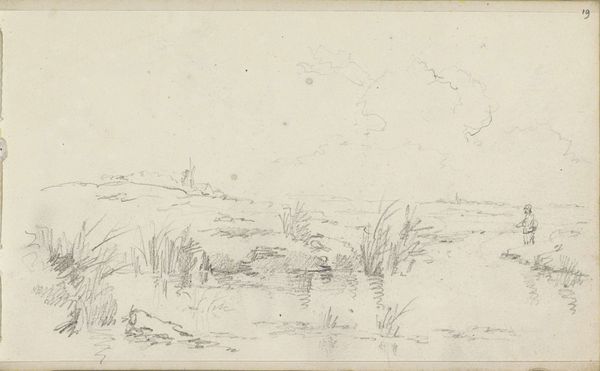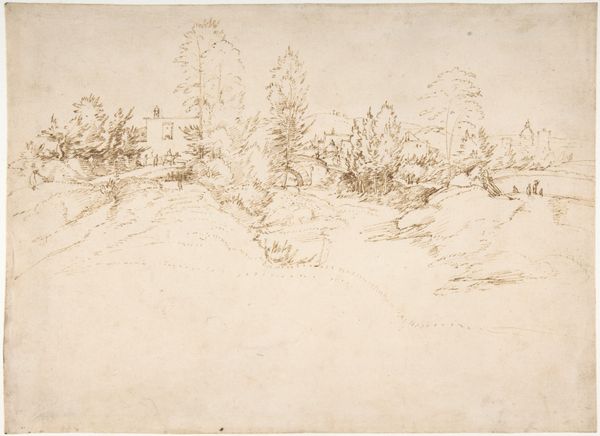
Vid udsigt over et landskab med en kæmpehøj i forgrunden, kvadreret. Fra Brandsø? 1842
0:00
0:00
drawing, pencil
#
drawing
#
landscape
#
romanticism
#
pencil
Dimensions: 215 mm (height) x 343 mm (width) (bladmaal)
Curator: This drawing by Dankvart Dreyer, made in 1842, is entitled "View over a Landscape with a Tumulus in the Foreground, Squared. From Brandsø?" Editor: The first thing that strikes me is how stark and austere the scene is. The lines are incredibly delicate, yet there’s a weightiness, almost a somber feel, emanating from the land itself. Curator: Yes, observe how Dreyer has used the grid, visible across the drawing, to meticulously organize and define the composition. The horizontality dominates; it almost flattens the space and distributes the light. Notice the texture—achieved solely with pencil—mimicking a quiet landscape. Editor: That tumulus—the burial mound—commands such presence despite the restrained execution. Tumuli are rich in cultural meaning, often signifying memory, the weight of the past. Their shape in the landscape speaks to a very ancient connection. To stand atop one offers not only the high ground, but connection with one's predecessors, those who looked out upon the world before. Curator: Quite. The artist's restrained use of line creates subtle modulations that add a level of sophistication that can be read as melancholy, particularly in the treatment of the sky and distant horizon line. Editor: Absolutely, that quiet gray. There's an atmosphere almost saturated with it, which I suspect also has roots in Romanticism, evoking the sublime, particularly that of mortality, the ephemeral quality of existence...a feeling enhanced by the knowledge that a barrow resides beneath the tumulus, sheltering, in turn, the bones of a single departed forebear. The mind of such an isolated traveler must be the same shade. Curator: The application of pencil emphasizes the structure over ornamentation, resulting in a balanced asymmetry—the landscape offset by the tumulus and the hint of trees in the distance. The squares further reinforce the drawing’s systematic architecture and function, an artifact within itself, speaking to the tradition and practice of plein air artistry. Editor: Reflecting on it, this is about the artist grappling with time, both the physical endurance of the land and the temporal depth represented by these ancient markers. Dreyer doesn't romanticize; instead, he studies and presents a scene resonant with understated grandeur. Curator: Agreed, an exquisite exercise in conveying weight through minimal gesture.
Comments
No comments
Be the first to comment and join the conversation on the ultimate creative platform.
